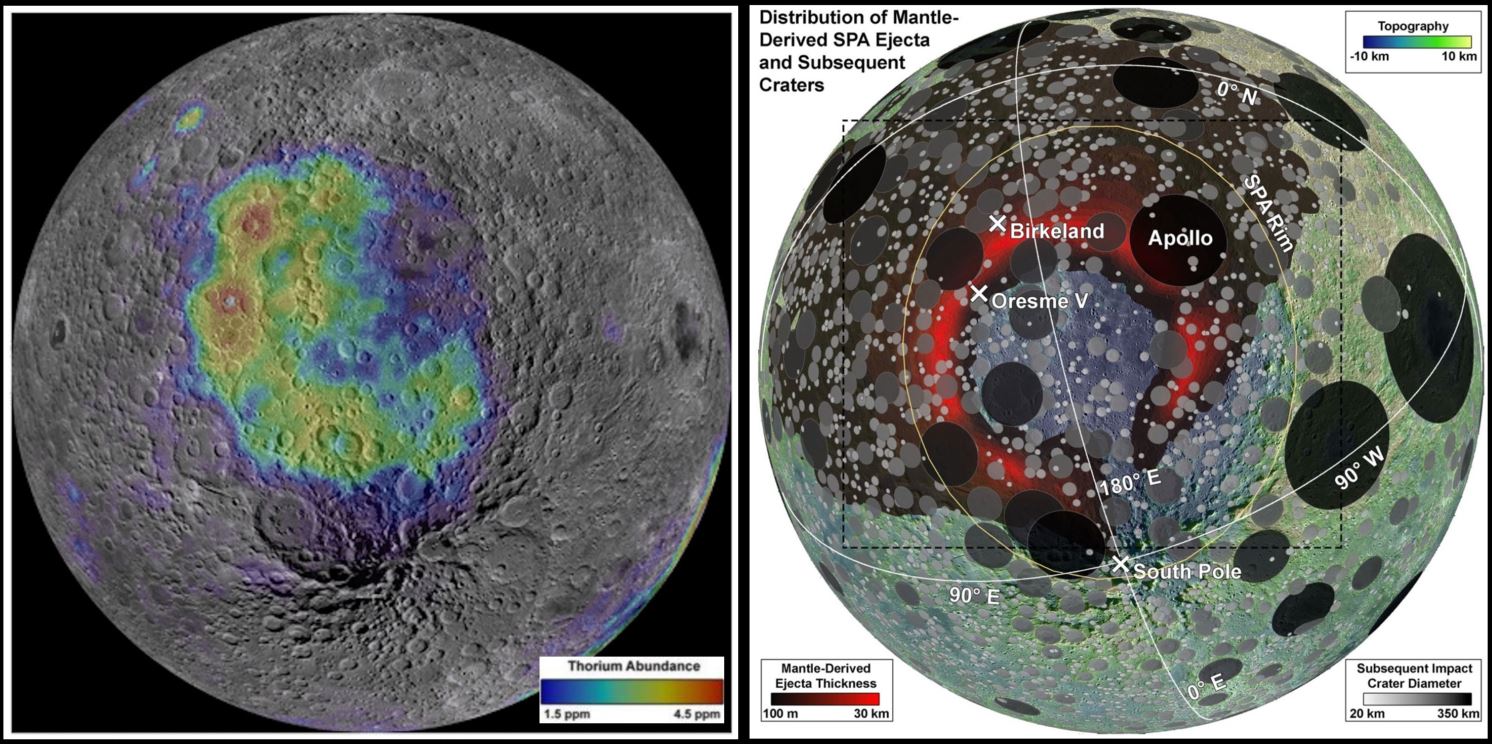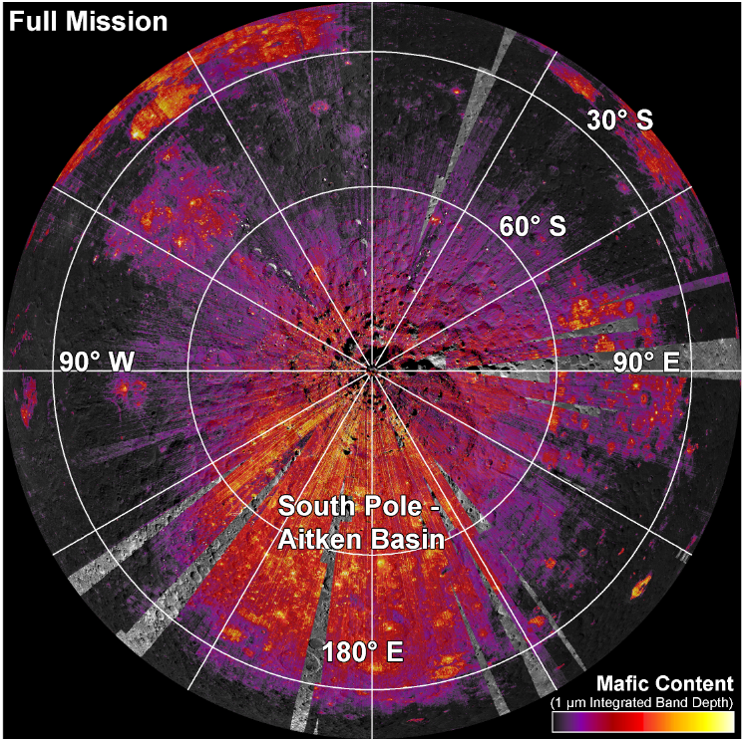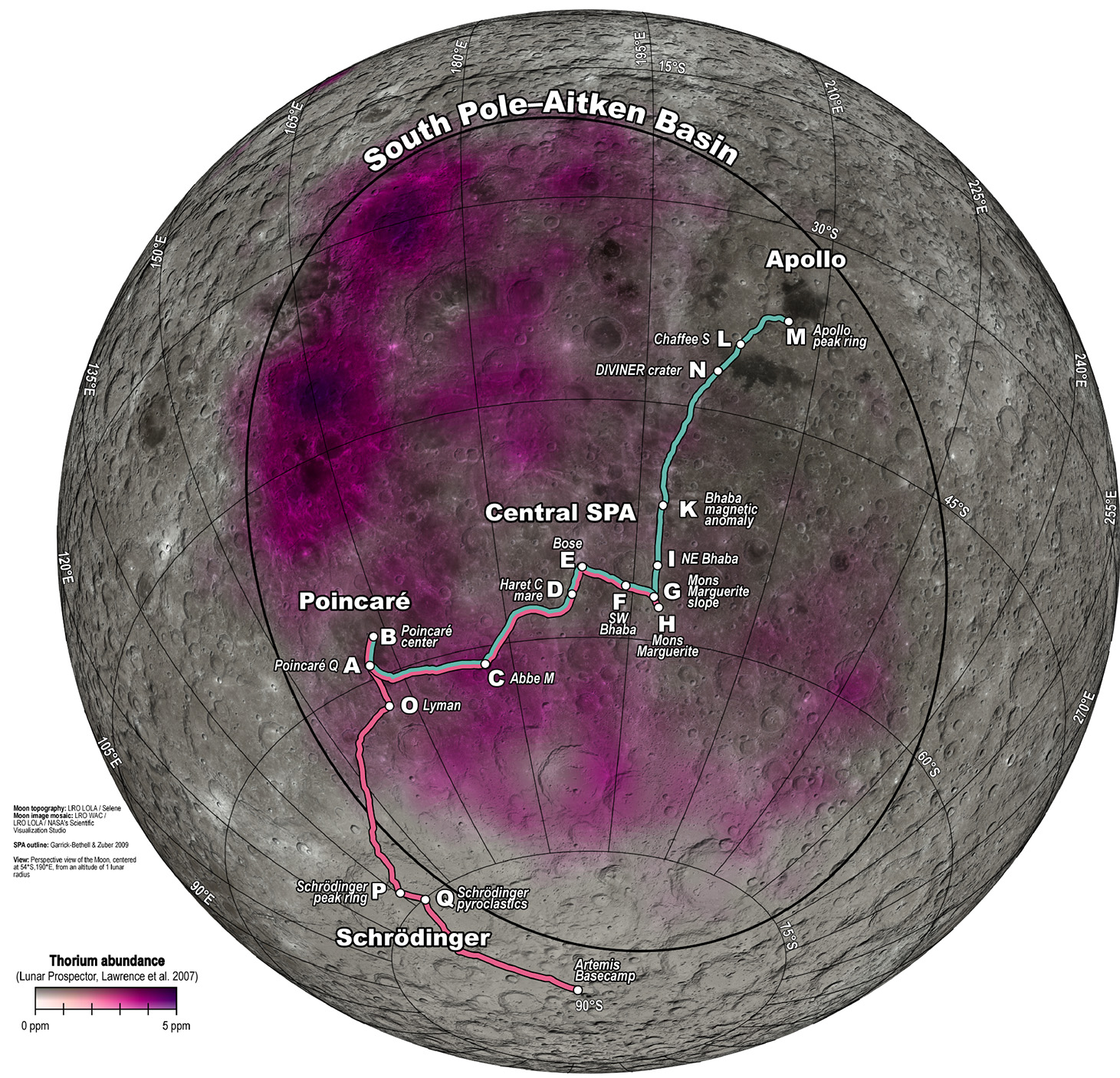Insights into Lunar Differentiation, Evolution, and Chronology from the Artemis Program
- 1NASA Goddard Space Flight Center, Planetary Geology, Geochemistry, and Geophysics, Washington, United States of America (daniel.p.moriarty.iii@gmail.com)
- 2University of Maryland, College Park, Maryland, United States of America
- 3Center for Research and Exploration in Space Sciences and Technology II, College Park, Maryland, United States of America
Within the next decade, humans are slated to return to the Moon via NASA’s Artemis Program. A driving goal of this program is to establish a sustained presence at one or more sites near the lunar south pole. Artemis astronauts are expected to participate in a diverse suite of scientific investigations, many of which leverage the extreme illumination and thermal environment at the lunar poles [1].
The lunar south pole is also relevant to geological investigations providing new insight into fundamental planetary processes. Specifically, Goal 1b of the Artemis III Science Definition Team Report [1] is to probe planetary differentiation and evolution processes including formation of a magma ocean, crust, mantle, and core.
The Artemis program will address this goal in several ways. The lunar south pole is set within highlands crustal terrane far-removed from previous lunar sample return missions (e.g., the Apollo and Luna programs). Sampling local crustal material will provide important insight into ancient crust-building processes (i.e., differentiation of the lunar magma ocean).
Ejecta from nearby impact basins will provide further insight into a wider range of planetary processes. Specifically, the lunar south pole is in the vicinity of the ~2000 km South Pole – Aitken Basin (SPA), the oldest and largest impact structure preserved on the Moon. Due to its size, age, and unique geophysical properties, SPA impact melt and ejecta samples are critical to unraveling lunar differentiation, the interior structure of the lower crust and upper mantle, and lunar chronology. Unusual volcanic resurfacing across SPA reveal complexities in the Moon’s thermal evolution [2]–[4]
SPA ejecta is associated with pronounced geochemical and mineralogical signatures, including Th, Fe, Ti, KREEP, and high-Ca pyroxene elevated relative to the surrounding highlands [5]. These compositional properties are consistent with exposure of late-stage lunar magma ocean cumulates[6].
These ancient mantle materials excavated by SPA are concentrated in the NW quadrant of the basin, presumably downrange from the impact[5], [7]. However, the relevant compositional signatures are also observed across the southern region of the basin, encompassing the lunar south pole (Figures 1+2). Using these compositional properties as a guide, Artemis astronauts will be able to identify and return candidate lunar mantle materials for detailed analyses in terrestrial laboratories.

Figure 1: The expected distribution of mantle materials ejected by SPA and modified by subsequent impact events (right) closely matches the distribution of thorium, a possible marker of late-stage lunar magma ocean cumulates (left) [5]. Small elevations in thorium persist across the south polar region.

Figure 2: 1 micron Integrated Band Depth maps constructed from Moon Mineralogy Mapper data reveal an elevated pyroxene abundance across the south polar region associated with SPA [8].
While fragments of SPA material are likely to be sampled at the Artemis site(s), the most recent planetary science decadal survey [9] strongly recommends a more direct approach to maximize the sample return of the Artemis program. Endurance-A [10], a mission concept study performed at the Jet Propulsion Laboratory and released with the Decadal survey, is a long-range robotic rover that would collect samples from multiple points of interest along a traverse beginning in central SPA and ending at a rendezvous with Artemis astronauts (Figure 3). As currently planned, the rover would collect and deliver up to ~100 kg of samples from ~12 sites, providing a diverse overview of the basin addressing numerous high-priority lunar science questions relevant to solar system chronology and lunar evolution. The rover is outfitted with a suite of instruments providing sampling context and in situ science measurements.

Figure 3: An example traverse for Endurance-A (purple) beginning in at Mons Marguerite (an unusual volcanic construct) and sampling SPA impact melt (SW Bhabha, Bose), mare basalts (Haret C mare), high-Th mantle ejecta (Abbe M), subsequent impact melt (Poincare, Schrodinger peak ring, Lyman), and pyroclastic materials (Schrodinger pyroclastics) en route to the Artemis base camp [10].
[1] Weber et al., in Lunar and Planetary Science Conference, 2021, no. 2548.
[2] James and Kiefer, in AGU Fall Meeting Abstracts, 2017, vol. 2017.
[3] Moriarty and Pieters, (2015), Geophys. Res. Lett., vol. 42, no. 19,
[4] Moriarty and Pieters, (2018), J. Geophys. Res. Planets, vol. 123, no. 3,
[5] Moriarty et al., (2021), J. Geophys. Res. Planets, vol. 126, no. 1,
[6] Moriarty et al., (2021), Nat. Commun., vol. 12, no. 1,
[7] Melosh et al., (2017), Geology, vol. 45, no. 12,
[8] Moriarty and Petro, in Lunar and Planetary Science Conference, Mar. 2020.
[9] National Academies of Sciences et al., (2022).
[10] Keane et al., (2022).
How to cite: Moriarty, D. and Petro, N.: Insights into Lunar Differentiation, Evolution, and Chronology from the Artemis Program, Europlanet Science Congress 2022, Granada, Spain, 18–23 Sep 2022, EPSC2022-295, https://doi.org/10.5194/epsc2022-295, 2022.

